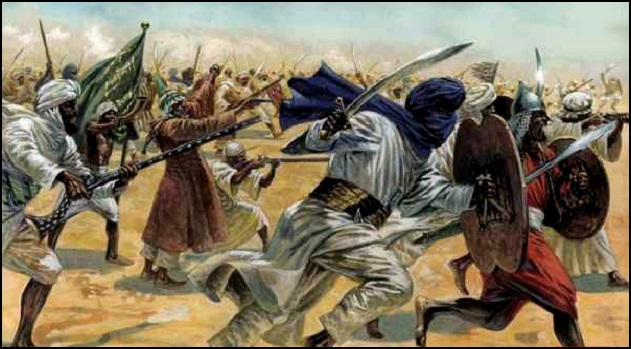The Adal Sultanate was located by the Red Sea Coast (current day Djibouti and Somali Land), controlled from the city of Harar. Supported by the Ottoman Empire’s cannons and guns, Imam Ahmed ibn Ibrahim “Giragn” (the left-handed) declared a Holy War on the Abyssinian Christian Kingdom. Though the Amharas were fearsome warriors, fighting against cannons and guns was new to them. They lost many battles and had to retreat to the mountains, leaving their capital and many cities for the invaders to loot and destroy (Pankhurst 85).
The Muslims, encouraged by the amount of loot and religious zeal, decimated the low lands of the Christian Kingdom. Looting, killing, pillaging, raping, and force-converting their way upward to the north. The monarchy led by Emperor Lebna Dengel migrated to the mountains. This terror lasted nineteen years. Buxton writes, that in 1528 the great storm which had been gathering for centuries broke over Abyssinia. In the low lands the Imam Ahmad ibn Ibrahim al-Ghazi, remembered in Abyssinia as Gragn (“the left-handed”), launched an invasion from the region of Harar which was almost to obliterate Abyssinia as a Christian state. This gifted fanatic had welded the nomads, especially the Somalis of the eastern plains into a formidable fighting force, fired with the spirit of the Jihad. They left a trail of slaughter and pillage throughout the length and breadth of the Christian highlands (Buxton 50).
The Amhara emperor asked the Portuguese Queen for help. Queen Eleni sent 400 well-trained and well-armed soldiers and weapons. The group was led by Dom Christovao da Gama the son of the famous mariner Vasco. Aided by the Portuguese fighters the Abyssinians were finally able to defeat the Muslim invaders (Pankhurst 92). After almost two decades of mayhem and devastation, the kingdom was left in shambles. The Muslims looted everything the Amharas had worked and accumulated for two and half millenniums. The effect of that destruction is still felt in the Socio-economical realm of the Amhara People. It was indeed a great loss. David Buxton sums it up by saying “It was also a fact of history, and to this, we must attribute the scarcity” (Buxton 50).
